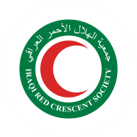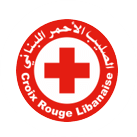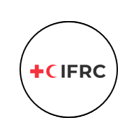Escrito por Melissa El Hamouch
2020, un año que se enfrentó a grandes retos introducidos por la COVID-19 pandemic that led to priority shifting of many National Societies (NS). En Sociedades de la Cruz Roja y de la Media Luna Roja son todavía apoyo sobre el terreno a sus comunidades, teniendo en cuenta al mismo tiempo ciertas normativas establecidas a escala nacional. Por desgracia, el auge de COVID-19 cases and the strict social distancing rules deemed it challenging for some National Societies to acquire and give proper trainings to their staff and volunteers. The challenge, however, was met with the desire of many National Societies to build their digital capacity even if it would be done remotely. “A menudo a mucha unidad dentro del Sociedad Nacional empezar a trabajar en algo nuevos” said Heleen Elenbaas, 510’s Oficina de Proyectos del Sistema de Información Geográfica y Gestión de Datos. Por ello 510, la iniciativa digital y de datos de la Cruz Roja Neerlandesa, apoyó a numerosas Sociedades Nacionales en el desarrollo de productos digitales que ayuden a su COVID-19 preparación y estrategias de respuesta.
Comunicación digital
Con el COVID-19 restricciones, había que iniciar y poner en marcha un enfoque creativo y más digital de la comunicación. Tl diseño y desarrollo de digital herramientas se acompañó de la preparación de formaciones digitales que actuar como guía sobre cómo utilizar y gestionar estos productos. Impartir la formación adecuada era esencial para garantizar que todos los productos digitales se utilizan de forma eficiente y sostenible. Various sesiones en línea se establecieron por 510 coordinadores técnicos a ayuda aumentar the National Societies’ capacidad en la utilización de estos productos. Basado en la necesidad aguda de las Sociedades Nacionales y los tipos de herramientas que se están desarrollando, se organizaron e impartieron diversas formaciones. Estos incluido cursos de transferencia de conocimientos, Geographic Information System (GIS) formacións, formación sobre gestión de datos, así como sobre Python, SEIR modelo, PowerBI, Google data studio y mucho más. Hasta la fecha se han impartido unas 20 formaciones, divididas en varias sesiones, impartidas en inglés o francés y diseñadas de forma que se adapten al contexto, el trabajo y las necesidades de la Sociedad Nacional.
Formación digital
Elenbaasse le preguntó por el apoyo a la formación que prestaba a los Media Luna Roja Iraquí (IRCS) and said, “they quería empezar a trabajar con el SIG de inmediato, pero estaban en necesita de más apoyo, and now we are doing weekly GIS working sessions together”. Moreover, when talking with the Sadeq Nazar, the Head of the Organizational Development and Reporting Department at IRCS, about the training sessions, he stated “we were able to shift our strategy, with the support of 510, and learned more about GIS and how IRCS can use and integrate this tool into our ongoing work”. Ibrahim Ali Ahmad, Especialista en SIG e Inteligencia Empresarial de la Cruz Roja Libanesa, shared his experience attending several 510 trainings by saying, “the trainings were most benefeicial since we were able to apply what we’ve learned in our workflow and it helped improving previous projects and ongoing ones”. Digital cursos de formación no sólo ayudan a las Sociedades Nacionales en edificio su personal’s capacidadpero también introduzca elm a más espacios de trabajo digitales y herramientas que a veces actúan como una plataforma para compartir su experiencias. Del mismo modo, el Sociedad Nacional de la Media Luna Roja de Jordania (JRCS) attended one of 510’s vulnerability and riesgo formaciones sobre índices, que trataban temas como la gestión de datos. Liselot Kattemölle, 510’s Project Assistant and the country focal point for JRCS said “the National Society was really complacido con la formación recibida y desde entonces han translated the material to Arabic and are using it to set up their own internal training of trainers at the NS level”. It is also equally as important to conduct seguimientos con las Sociedades Nacionales para recabar su opinión sobre las formaciones, ya que eso, en primer lugar, añade valor a todos los futuros preparativos y en segundo lugar ayudars evaluar si cierta necesidades han cambiado. Elenbaas se le pidió que compartiera algunos comentarios que había recibido del IRCS y dijo “la semana pasada finalizaron su primer mapa y quedaron muy contenido y orgulloso!” Esto último también fue expresado por Nazar from IRCS as he said “it was hard at the beginning when learning how GIS works, but now I have completado un mapa, on my own, with accurate data and it is really exciting”. Adiciónally, Ali Ahmad compartido algunos comentarios by saying, “I was particularly impressed with the practical use of the material presented; this is exactly what I would expect from a training”. A continuación expressed how the trainings affected the outcome of the Lebanese Red Cross’ work by saying, “it improved the outcome of our projects and made our teamwork effective in terms of planning, decision making, and employee engagement, which led to a higher quality of work”.

Mapa del Sistema de Información Geográfica realizado por Sadeq Nazar (IRCS) tras la formación.
Working towards this data and digital shift, is unfortunately sometimes met with limitations, “a menudo el seguimiento y la aplicación son limitados porque hay isn’t capacidad o recursos suficientescomo adquirir determinados licencias” dijo Elenbaas al hablar de algunos retos a los que se enfrentó. Sin embargo, continuó diciendo que “the drive within the National Society to start working on new things existe” que para muchos ya es un tremendo primer paso hacia incluyendo más datos y digital en sus estrategias y trabajosobre todo en un año que fue recibido con inmenso desafíos.
Image source: IFRC ShaRED Web Platform


